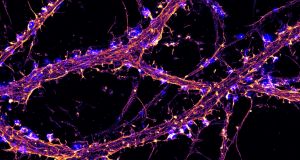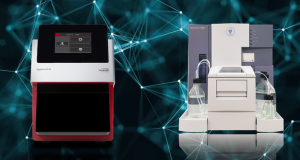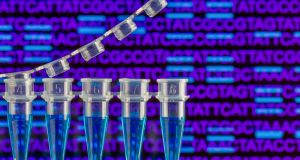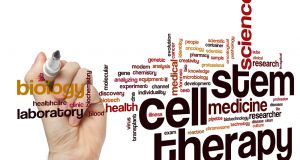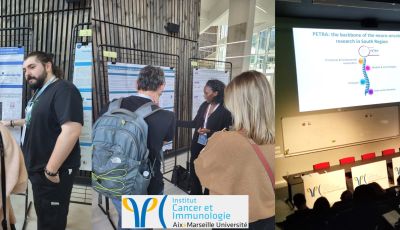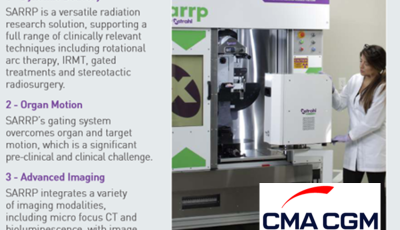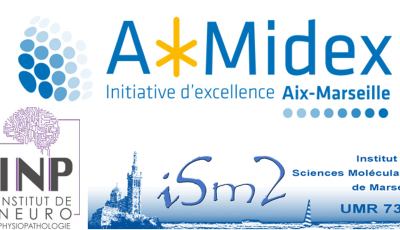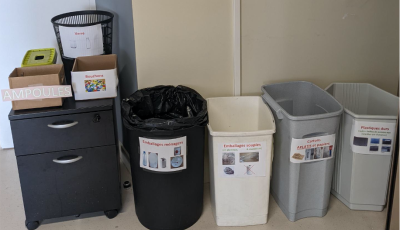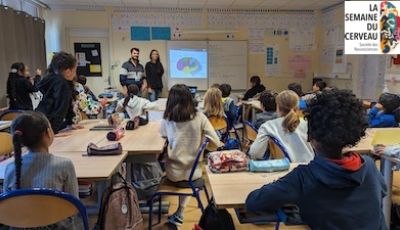Teams
NeuroTimone Facility (PFNT)
The PFNT Facility is a coherent set of exploration tools in neurobiology allowing research at the molecular, cellular and integrated levels.
News
-
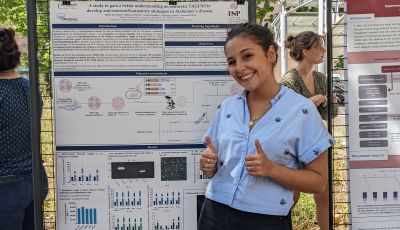 Team 6 (Nivet) at NeuroMarseille's Day
Team 6 (Nivet) at NeuroMarseille's DayTeam 6 was happy to participate in NeuroMarseille's day, which took place on June 28, 2022.
Many members of the INP attended this scientific and friendly day for the neuroscience community.
Our M1 student, Marine Dos Santos, also presented her one-month work in our team, during the afternoon poster session.
We thank NeuroMarseille for this great day !
-
 Canceropole Annual Seminar in St Raphaël
Canceropole Annual Seminar in St RaphaëlINP members from team 8 (GlioME: Gliomagenesis and MicroEnvironment) and team 9 (Cytoskeleton and Neurophysiopathology) attended the Canceropole PACA annual seminar which took place in Saint-Raphaël palais des congrés on July 5th and 6th 2022.
-
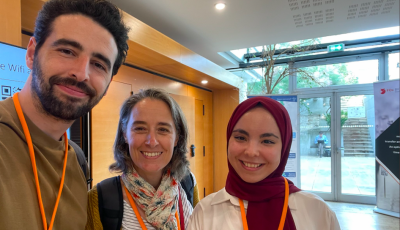 INP attending first MOSBRI meeting in Paris
INP attending first MOSBRI meeting in ParisOn the 20-22 nd June, the first Molecular Scale Biophysics Research Infrastructure (MOSBRI) conference was held in Paris. Dahbia Yatoui from team 9 and Géraldine Ferracci from PINT went to this event, where Dahbia had the opportunity to present her work "Role of zinc-binding sites in Tau aggregation" on a poster.
-
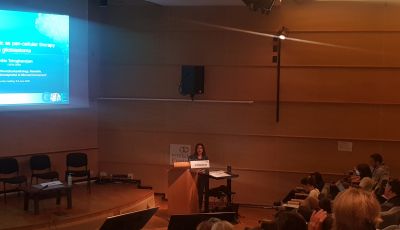 Aurélie Tchoghandjian at the SunRise Congress
Aurélie Tchoghandjian at the SunRise CongressThe GlioME team was represented on 8 and 9 June 2022 at the Sunrise (Solid tumor cancer stem cell network) meeting at the Curie Institute in Paris.
Aurélie Soubéran presented a poster on the role of the ML-IAP protein in glioblastoma growth and Aurélie Tchoghandjian presented the team's work on "Smac mimetic as pan-cellular therapy in glioblastoma".
-
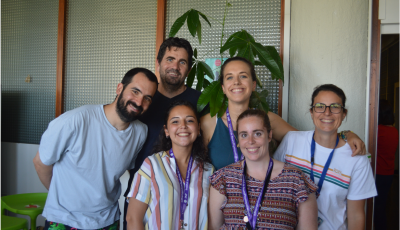 INP Day 2022 : Team Nivet (6) was happy to attend !
INP Day 2022 : Team Nivet (6) was happy to attend !After two years of being postponed, INP Day #2 finally took place on Friday, June 3rd.
A huge congrats and thank you to the organizing team (including our engineer Louise) for persevering and making this day a success!
Team 6 took the opportunity of this cheerful day to take a picture, with Marine our intern who is a M1 student.
-
 Scientifica, la recontre des Arts et des Sciences
Scientifica, la recontre des Arts et des SciencesJournée Interdisciplinarité(s) organisée par AMU.
On vous attend nombreux le 18 juin au Cube (Faculté des Lettres à Aix en Provence) pour assister à la manifestation Scientifica pour une séance de rattrapage pour une installation immersive "Porteur de lumière".
Pour plus d'information, veuillez consultez le programme.
-
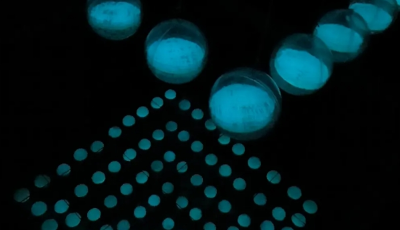 La journée de l'INP à la rencontre de la fée bleue
La journée de l'INP à la rencontre de la fée bleueLes 2 et 3 juin derniers, les équipes de l'INP ont profité d'une installation de bioluminescence à l’occasion de la fête de l'INP.
Vous pouvez voir deux reportages sur France3 qui a profité de cet événement pour faire une captation pour le Mondial des Océans: francetvinfo et FR3.
-
 The GlioME team represented the institute at the Brain Tumor Meeting in Berlin
The GlioME team represented the institute at the Brain Tumor Meeting in BerlinOn 19 and 20 May 2022 the GlioME team represented the INP at the "Brain tumor Meeting" in Berlin with the presentation of 6 posters:
- Chiara Bastiancich who won the 2nd poster prize: CHARACTERIZATION OF THE GLIOBLASTOMA RESECTION MICROENVIRONMENT AS THERAPEUTIC TARGET TOWARDS THE DEVELOPMENT OF LOCAL TREATMENT
Pages
INP in numbers
- 126 members
- 44 researchers
- 48 research assistants
- 12 post-docs
- 11 PhD
Café gourmand
Participation of Team 8 in the ICI Conference
Part of Team 8 was present at the ICI (Institute of Cancer and Immunology) congress on April 6.
On this occasion, Aurélie Tchoghandjian presented the PETRA network and Sokhna Babou (Master 2 student) and Emmanuel Snacel-Fazy (PhD student) discussed their results with the scientific community during the poster session.
CMA-CGM funding obtained by Team 8
Team 8 has recently obtained a CMA-CGM funding in the framework of the call for projects "Programme d'équipement et de recherche clinique" 2022
The project title is "Program of Precision RAdioTherapy to Improve patient Cancer treatment" and aims to participate in the purchase of a small animal irradiator "SARRP" that will complement the pre-clinical offerings of the PETRA network.
Amidex Blanc funding of a collaborative project between teams 8 and 9
Team 9 represented by José Luis and team 8 represented by Aurélie Tchoghandjian have obtained Amidex Blanc funding for the project: "Bioinspired cytotoxic copper complexes: deciphering their mechanism of action in cancer cells to develop efficient therapeutic agents (CytoCu4Cancer)".
This project is led by a chemist, Olga Iranzo of the Institute of Molecular Sciences of Marseille (iSm2).
Tous et toutes au recyclage !
Depuis lundi 3 Avril, l'INP participe à une opération inter-laboratoires de quantification de déchets recyclables professionnels (et ménagers) sur le campus Timone.
Pour cela, chaque aile a été aménagée avec des points de collecte et de tri sélectif. Chaque semaine, les différentes catégories seront pesées puis emmenées au recyclage pour valorisation.
L'INP participe à la 2ème édition de la semaine du Cerveau
Comme chaque année les membres de l'INP participent à la semaine du cerveau. Parmi les actions de cette année on peut citer l'intervention de Cynthia et Charbel deux doctorants de l'équipe 9 qui sont allés rendre visite à l'école primaire du Pharo Catalans
Maud Gratuze, new team leader, first INP publication
In collaboration with the Holtzman lab., Maud Gratuze, with her colleagues Monica Xiong and Chao Wang, published an article on a project developed during her postdoc in the USA. In this study, entitled "Astrocytic APOE4 removal confers cerebrovascular protection despite increased cerebral amyloid angiopathy" and recently published in Molecular Neurodegeneration, they reduced ApoE4, the strongest genetic risk factor in Alzheimer’s disease, specifically derived from astrocytes in a mouse model of cerebral amyloid angiopathy.















